Experience the Art and Culture of Norbulingka: Tibet’s Sanctuary of Peace
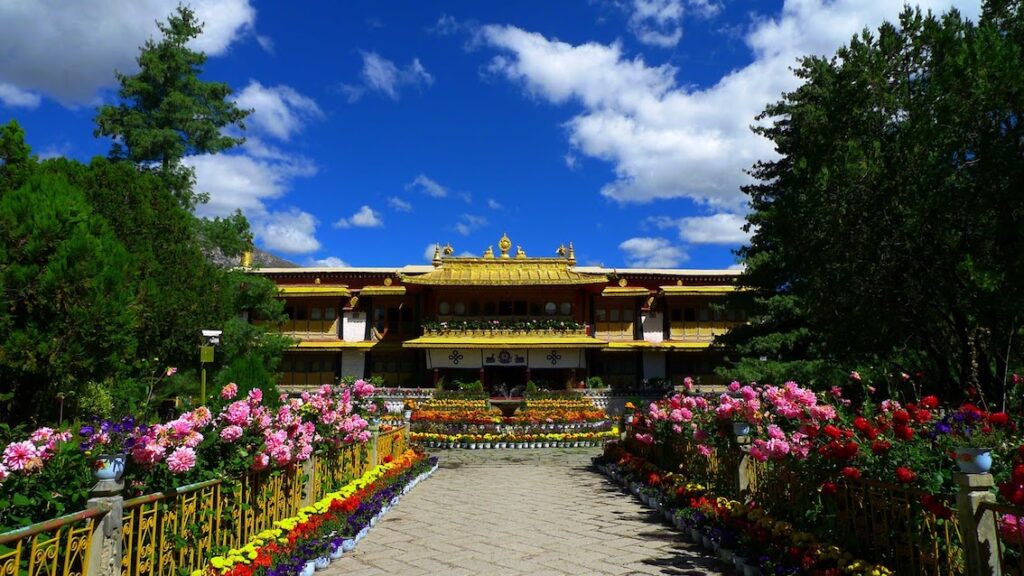
An Essential Guide to Visiting Norbulingka
Nestled against the backdrop of Lhasa, the enchanting Norbulingka Palace, often referred to as the “Park of Treasure,” beckons travelers with its rich history and stunning natural beauty. Originally established as a summer retreat for the Dalai Lamas in 1755, this sprawling complex spans over 360,000 square meters, making it the largest manmade garden in Tibet. With its lush gardens, serene pavilions, and ornate palaces, Norbulingka provides a peaceful escape from the bustling streets of Lhasa, inviting you to wander through its tranquil paths and immerse yourself in Tibetan culture.
As you stroll through the garden, you’ll encounter three magnificent palaces—each a testament to the architectural brilliance of Tibetan design and the artistic legacy of the Dalai Lamas. The vibrant murals, exquisite Thangkas, and serene Buddhist statues tell stories of a bygone era, while the fragrant blooms and rustling leaves offer a refreshing respite at high altitude. Norbulingka isn’t just a historical site; it’s a living museum, where traditional festivals like the Shoton bring the grounds to life with colorful performances and joyful gatherings.
Whether you seek spiritual reflection, a deeper understanding of Tibetan heritage, or simply a beautiful place to unwind, Norbulingka stands as a must-visit destination. Prepare to be captivated by the harmonious blend of nature and history, where every corner reveals a new facet of Tibetan culture waiting to be discovered.
In This Guide
- An Essential Guide to Visiting Norbulingka
- The Rich History and Legends of Norbulingka
- Main Highlights: What You Absolutely Can’t Miss
- Planning Your Visit: A Practical Guide
- Tickets: Prices, Booking, and Tips
- How to Get There: A Complete Transportation Guide
- Local Cuisine and Accommodation Nearby
- Frequently Asked Questions
- Final Thoughts on Your Trip
The Rich History and Legends of Norbulingka
Nestled on the western edge of Lhasa, Norbulingka Palace stands as a testament to the rich tapestry of Tibetan history and culture. Known as the “Park of Treasure,” this expansive summer palace has long been a serene retreat for the Dalai Lamas, where they mingled governance with spirituality amid the tranquility of its lush gardens.
The story of Norbulingka begins in 1755 when the 7th Dalai Lama, Kelsang Gyatso, transformed a barren landscape of overgrown weeds and wild animals into a verdant paradise. Attracted by the area’s natural beauty, he envisioned this space as a summer haven where he could address political matters, host guests, and hold religious ceremonies. What started as a simple campsite soon blossomed into a grand park that would serve as the summer residence for successive Dalai Lamas.
As the years progressed, each Dalai Lama added their unique touch to Norbulingka, expanding its scale and splendor. By the time of the 8th Dalai Lama, the park had evolved into a complex of palaces and gardens. Each palace, or “potrang,” was meticulously designed, showcasing traditional Tibetan architectural elements blended with garden aesthetics. The countless rooms and chapels found within these structures served not just as living quarters but as sacred spaces for contemplation and worship.
The layout of Norbulingka is both functional and symbolic. It comprises a forest area, palace area, and the space in front of the palaces, creating a harmonious balance between nature and architecture. The intricately painted murals adorning the walls tell stories of Tibetan Buddhism, while precious relics and scriptures are carefully preserved within the halls.
In 1959, Norbulingka was opened to the public, transitioning from a royal retreat to a cultural museum and public park. This change allowed visitors to appreciate its beauty and historical significance firsthand. Today, it remains a vibrant gathering place, especially during the Shoton Festival, where locals and tourists come together to celebrate Tibetan culture through performances, picnics, and communal joy.
Among the most remarkable structures within Norbulingka are the three primary palaces: Kelsang Potrang, Tsokyil Potrang, and Takten Migyur Potrang. Each of these palaces showcases intricate artistry and serves as a repository of Tibetan heritage. Kelsang Potrang, the first and foremost palace, is particularly notable for its lifestyle murals, a rarity in Tibetan Buddhist art. Meanwhile, Takten Migyur Potrang, built by the 14th Dalai Lama, stands as a magnificent example of Tibetan architecture, featuring a stunning mural that chronicles the history of Tibet across more than 300 scenes.
As visitors wander the grounds of Norbulingka, they are not merely walking through a park; they are traversing centuries of Tibetan history, legends, and spiritual devotion. The peaceful ambiance, coupled with the rich cultural narrative, makes Norbulingka a must-visit destination for anyone seeking to understand the essence of Tibet. Whether you’re taking a leisurely stroll through its gardens or participating in lively festivals, Norbulingka invites you to connect with its storied past and the legends that continue to echo through its ancient walls.
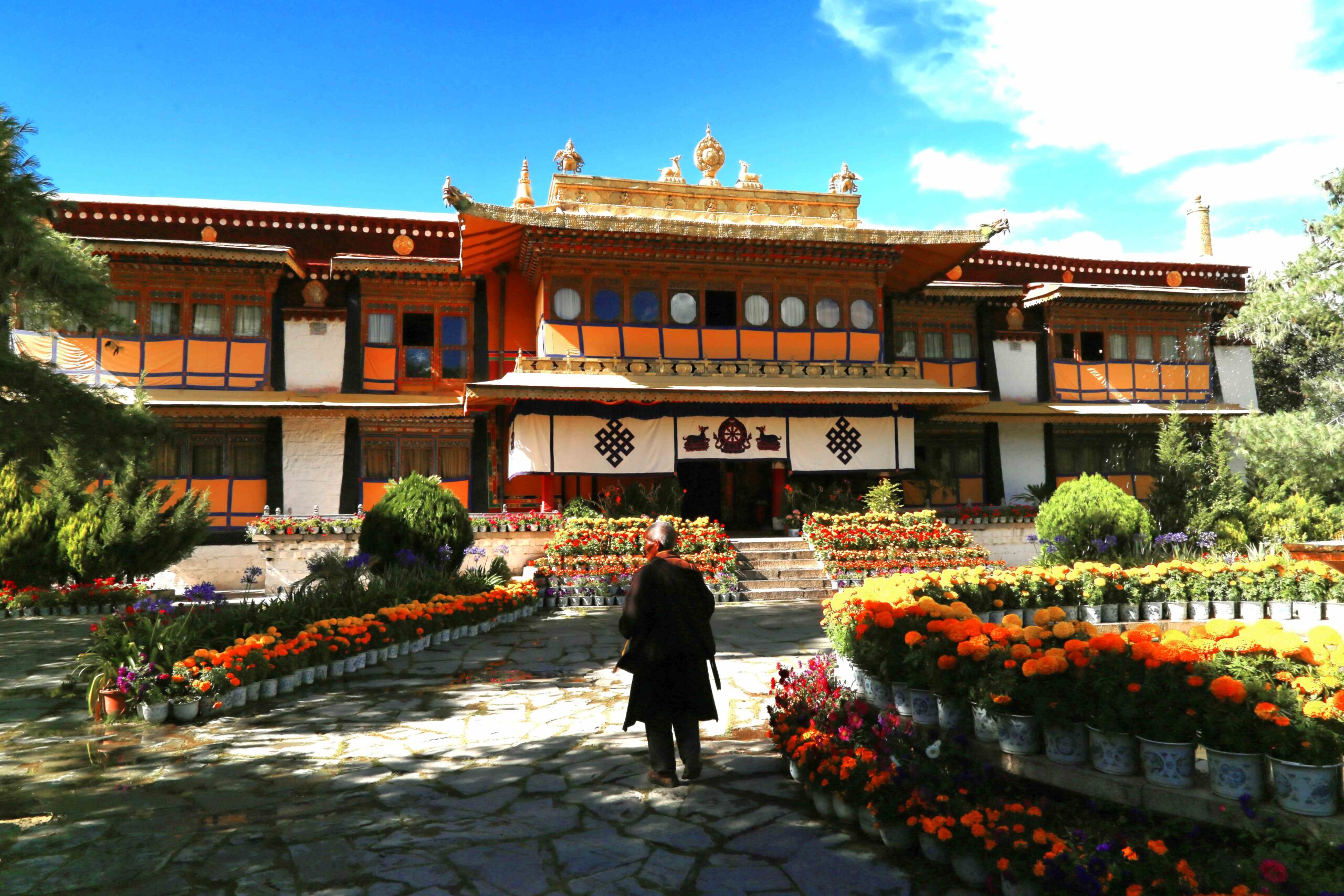
Norbulingka.
Main Highlights: What You Absolutely Can’t Miss
Nestled in the heart of Lhasa, Norbulingka, meaning “Park of Treasure,” is a breathtaking escape that offers a glimpse into Tibet’s rich history and culture. This magnificent palace complex, a UNESCO World Heritage Site, was the summer residence of the Dalai Lamas and is renowned for its stunning gardens, intricate architecture, and serene atmosphere.
1. Explore the Palaces of the Dalai Lamas
Norbulingka is home to several remarkable palaces, each with its own unique character and history:
-
Kelsang Potrang: Built under the guidance of the 7th Dalai Lama, this three-story palace features a Main Assembly Hall on the ground floor and chambers for worship on the upper levels. Don’t miss the vibrant murals on the second floor, depicting scenes of daily life that are rare in Tibetan culture.
-
Tsokyil Potrang: This picturesque pavilion sits in the center of a tranquil lake and is celebrated for its stunning views. Connected by two charming stone bridges, it is adorned with gold-covered roofs and beautiful Buddhist murals, making it a prime spot for photography.
-
Takten Migyur Potrang: The newest of the palaces, completed in 1954, boasts elegant design elements that blend temple and villa styles. The second floor showcases an impressive mural depicting Tibetan history with over 300 scenes, offering visitors a captivating insight into the region’s past.
2. Stroll Through Lush Gardens
Covering over 360,000 square meters, Norbulingka is the largest manmade garden in Tibet. As you wander through its meticulously landscaped grounds, you’ll encounter a variety of vibrant flowers and plants that thrive in the high-altitude climate. The tranquility of these gardens provides an ideal setting for relaxation and introspection, far removed from the hustle and bustle of city life.
3. Visit the Norbulingka Museum
Opened to the public in 1959, the Norbulingka Museum houses a wealth of historical artifacts, including exquisite Buddhist thangkas, statues, and relics. Here, you can gain deeper insights into Tibetan culture and the significance of Norbulingka as a political and spiritual center throughout the ages.
4. Experience the Shoton Festival
If your visit coincides with the Shoton Festival (often held in July), you’ll have the unique opportunity to witness this vibrant celebration. The festival is marked by traditional Tibetan opera performances and family picnics in the gardens. The atmosphere buzzes with excitement as locals and tourists alike gather to enjoy the rich cultural heritage of Tibet.
5. Capture Unforgettable Moments
With its stunning architecture and picturesque gardens, Norbulingka is a photographer’s paradise. Be sure to take plenty of pictures, especially of the intricately decorated palaces and the serene landscape. Just remember to ask for permission before photographing the interiors of religious spaces.
6. Plan Your Visit
Getting to Norbulingka is easy, as it is conveniently located just a short distance from key attractions like the Potala Palace and Jokhang Temple. It’s a great idea to allocate 2-3 hours to explore the area fully, soaking in the beauty and tranquility of this historic site. To make the most of your experience, consider participating in guided tours or local activities that may be happening during your visit.
Norbulingka is not just a historical site; it’s a place where you can immerse yourself in the beauty of Tibetan culture and the natural landscape. Whether you’re an avid history buff or simply seeking a peaceful retreat, this enchanting summer palace is a must-visit destination on your journey through Tibet.
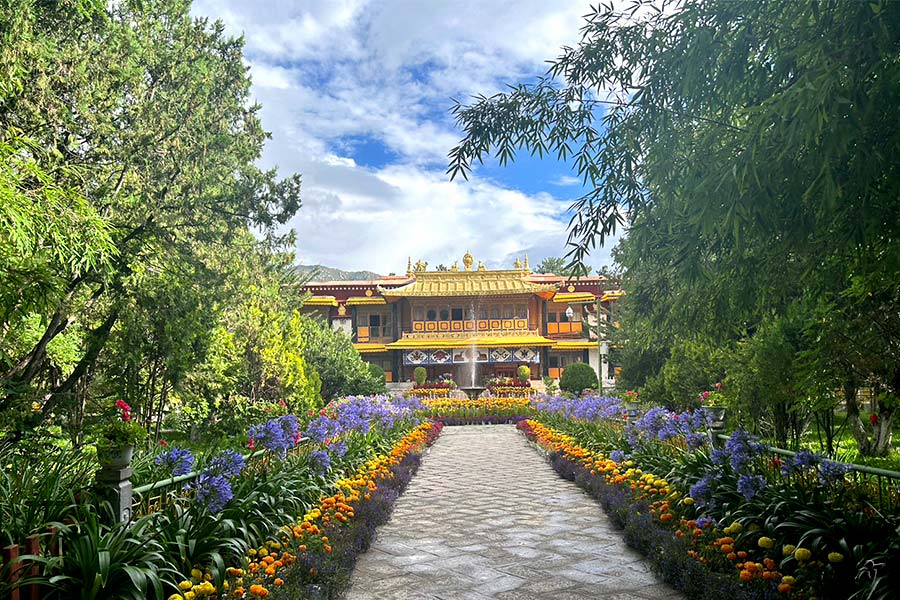
Norbulingka.
Planning Your Visit: A Practical Guide
Visiting Norbulingka, the summer palace of the Dalai Lamas, offers a unique glimpse into Tibetan culture and history. Nestled in a serene park setting, this UNESCO World Heritage site is a must-see for anyone traveling to Lhasa. Here’s how to make the most of your visit.
Getting There
Norbulingka is conveniently located in Lhasa, just a short distance from other major attractions:
- Potala Palace: 2.5 km away
- Jokhang Temple: 4 km away
- Barkhor Street: 3.8 km away
You can easily reach Norbulingka by public bus (lines 2, 14, and 24), or opt for a leisurely walk from the nearby sites. Taxis and pedicabs are also readily available if you’re coming from further away.
Opening Hours and Admission
- Ticket Price: 60 RMB
- Zoo Admission: An additional 10 RMB to visit the only zoo in Lhasa.
- Recommended Visit Duration: Allow 2-3 hours to explore the expansive grounds.
What to Expect
Norbulingka spans over 360,000 square meters, featuring beautiful gardens, palaces, and religious sites. Here are some highlights:
- Palaces: Explore the stunning architecture of Kelsang Potrang, Tsokyil Potrang, and Takten Migyur Potrang, each offering unique historical relics and Buddhist art.
- Tyokyil Potrang: This picturesque pavilion in the middle of a lake is a prime spot for photographs.
- Murals and Artworks: Don’t miss the exquisite Thangkas and wall paintings that tell stories of Tibetan culture and spirituality.
Seasonal Events and Festivals
If your visit coincides with the Shoton Festival, typically held in early summer, you can participate in vibrant activities, including traditional Tibetan opera performances and family picnics. The festival creates a lively atmosphere that enhances the beauty of Norbulingka.
Activities
Beyond sightseeing, Norbulingka offers a range of activities:
- Cultural Performances: Check the schedule for Tibetan shows, especially during the Shoton Festival.
- Tea Tasting: Experience authentic Tibetan tea in the park’s tranquil setting.
- Photography: Capture the stunning landscapes and intricate details of the palaces and gardens.
Tips for Your Visit
- Dress Appropriately: The altitude (3,650 meters) can affect your comfort, so wear layers and stay hydrated.
- Plan Your Time: If you prefer, consider taking a tourist bus for a convenient overview of the park for 20 RMB per person.
- Respect the Culture: Always ask for permission before photographing inside religious halls.
- Enjoy the Surroundings: Take time to relax in the peaceful gardens, a perfect antidote to the bustling city life.
Suggested Itineraries
If you’re planning a longer stay in Tibet, consider these options:
- 4 Days Holy City Lhasa Private Tour: An in-depth exploration of Lhasa’s sacred sites, including Norbulingka.
- 5 Days Lhasa & Local Life Discovery Tour: A mix of culture, history, and local experiences.
- Day Trip to Namtso Lake: Extend your visit with a stunning day trip to one of Tibet’s most beautiful lakes, best visited from May to October.
Conclusion
Norbulingka is not just a historical site; it’s a vibrant part of Tibetan culture. By planning your visit thoughtfully, you can fully appreciate its beauty and significance. Enjoy your journey through this enchanting summer palace!
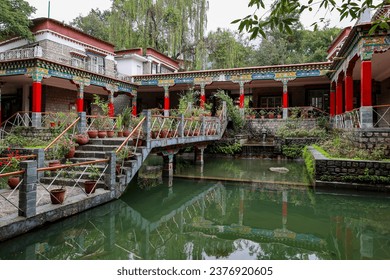
Norbulingka.
Tickets: Prices, Booking, and Tips
Visiting Norbulingka is a delightful experience that combines history, culture, and natural beauty. Here’s everything you need to know about ticket prices, booking, and some handy tips for your visit.
Ticket Prices
- General Admission: The entrance fee to Norbulingka is 60 RMB (approximately $9 USD). This grants you access to the beautiful gardens and palaces.
- Zoo Admission: If you’re interested in visiting the only zoo in Lhasa, there’s an additional fee of 10 RMB (around $1.50 USD).
Booking Information
Tickets can typically be purchased at the entrance of Norbulingka. It’s advisable to arrive early, especially during peak tourist seasons or during special events like the Shoton Festival, to avoid long lines.
Tips for Your Visit
-
Time Commitment: Plan to spend 2 to 3 hours exploring the vast park, which encompasses over 360,000 square meters. Depending on your stamina and interest, you can choose to walk around or opt for the tourist bus service available for 20 RMB (about $3 USD).
-
Visit During Festivals: If possible, try to schedule your visit during the Shoton Festival, which usually occurs in July according to the Tibetan lunar calendar. This vibrant event features traditional Tibetan opera and is a fantastic way to immerse yourself in local culture.
-
Photography: Norbulingka is a photographer’s paradise with stunning landscapes and intricate architecture. However, be sure to ask for permission before taking photos inside any of the Buddhist halls and palaces.
-
Enjoy Local Culture: Don’t miss out on the opportunity to taste traditional Tibetan tea and perhaps catch a local performance during your visit.
-
Plan Your Travel: Norbulingka is conveniently located near other Lhasa attractions, such as Potala Palace and Jokhang Temple, making it easy to explore multiple sites in one day.
By keeping these details in mind, you’re set for a memorable visit to Norbulingka. Enjoy the blend of tranquility and cultural heritage as you stroll through this enchanting summer palace!
How to Get There: A Complete Transportation Guide
To reach the enchanting Norbulingka Palace in Lhasa, Tibet, travelers will find several convenient transportation options at their disposal. This guide will help you navigate your way to this historic summer residence of the Dalai Lamas, ensuring that your journey is as seamless as possible.
Getting to Norbulingka
Location Overview
Norbulingka is situated in the west part of Lhasa, approximately:
– 2.5 km from the iconic Potala Palace
– 3.8 km from the bustling Barkhor Street
– 4 km from the revered Jokhang Temple
This central location makes it easily accessible for visitors exploring Lhasa.
Public Transportation
-
Buses: The public bus system in Lhasa is an affordable and efficient way to reach Norbulingka. Buses No. 2, 14, and 24 all have stops near the palace. A single fare typically costs around 2 RMB, making it an economical option for travelers.
-
Walking: If you enjoy walking, Norbulingka is within a pleasant walking distance from major attractions like the Potala Palace and the Tibet Museum. A leisurely stroll allows you to soak in the vibrant atmosphere of Lhasa while enjoying the local sights along the way.
Taxis and Pedicabs
For those who prefer a more direct route, taxis are readily available throughout Lhasa. A taxi ride to Norbulingka from central locations like Barkhor Street should cost between 15 to 30 RMB, depending on traffic and time of day. Alternatively, pedicabs (cycle rickshaws) provide a unique way to traverse the city, offering a more personal touch to your travel experience.
Tips for Your Visit
-
Tickets: Admission to Norbulingka is approximately 60 RMB. If you’re interested in visiting the only zoo in Lhasa located within the park, an additional fee of 10 RMB applies.
-
Time: Plan to spend 2-3 hours exploring this expansive park. You can opt to visit specific areas or take a tourist bus within the park for around 20 RMB per person, making it easier to see the highlights without too much walking.
-
Activities: Engage in various activities available at Norbulingka, such as watching traditional Tibetan shows or tasting authentic Tibetan tea. If you visit during the Shoton Festival, prepare for a lively atmosphere filled with cultural performances and festivities.
-
Photography: Norbulingka is a photographer’s paradise, with its stunning gardens and intricate palace architecture. Don’t hesitate to capture the beauty, but remember to seek permission if you wish to photograph inside the Buddhist halls.
Conclusion
With its rich history and serene beauty, Norbulingka Palace is a must-visit destination for anyone traveling to Lhasa. Whether you choose to take public transport, walk, or hire a taxi, the journey to this “Park of Treasure” will be a rewarding part of your Tibetan adventure. Enjoy your visit!
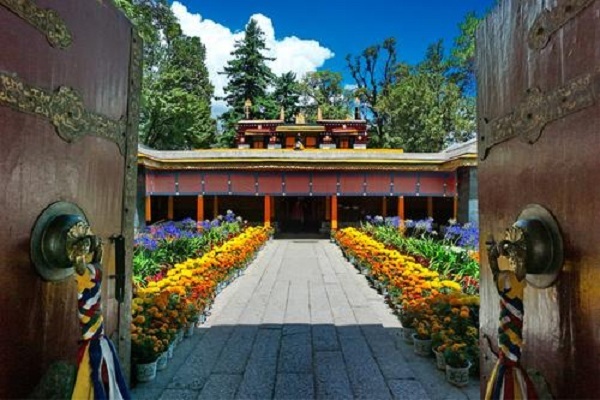
Norbulingka.
Local Cuisine and Accommodation Nearby
Nestled in the serene beauty of Norbulingka, the summer palace of the Dalai Lamas, visitors can immerse themselves not only in the rich cultural heritage but also in the delightful local cuisine and comfortable accommodations that enhance their experience in Lhasa.
Culinary Delights
After wandering through the lush gardens and historic palaces of Norbulingka, treat your palate to some authentic Tibetan cuisine at nearby eateries. Here are a few recommendations:
-
Tibetan Family Kitchen
Located just a short distance from Norbulingka, this cozy restaurant offers a warm atmosphere and a menu filled with traditional Tibetan dishes. Don’t miss trying the Momos (steamed dumplings filled with meat or vegetables) or Thukpa (noodle soup)—both are local favorites that provide a hearty meal after a day of exploration. -
The Diner
For those craving a mix of Tibetan and Western flavors, The Diner is a fantastic spot. With its eclectic menu, you can enjoy everything from Tibetan-style pizza to Yak burgers. The vibrant ambiance, adorned with local art, makes it a great place to relax and refuel. -
Lhasa Kitchen
Just a stone’s throw away from the palace, Lhasa Kitchen is renowned for its delicious, authentic Tibetan fare. Their Sukuti (dried meat) and Sha Phaley (fried meat pies) are highly recommended. Pair your meal with a cup of butter tea for an authentic experience.
Comfortable Stays
When it comes to accommodation, there are several excellent options nearby that cater to diverse needs and budgets:
-
Khangsar Hotel
A well-known establishment among travelers, Khangsar Hotel offers comfortable rooms with stunning views of the surrounding mountains. With a blend of traditional Tibetan architecture and modern amenities, it’s a perfect base for exploring Lhasa. The hotel also features an on-site restaurant serving local dishes. -
Yuthok Hotel
Located conveniently near Norbulingka, Yuthok Hotel provides a peaceful retreat with its tranquil garden and serene setting. The rooms are spacious and well-furnished, ensuring a restful stay. Guests often rave about the friendly service and the delightful breakfast that includes both Tibetan and continental options. -
House of Shambhala
For a more boutique experience, consider the House of Shambhala. This charming guesthouse reflects traditional Tibetan style, with beautifully decorated rooms and a welcoming atmosphere. It’s a great place to unwind after a day of sightseeing, and the staff can assist you in arranging tours and cultural experiences.
Local Flavors and Hospitality Awaits
Whether you’re savoring a bowl of warming Thukpa or resting at a cozy hotel, the area around Norbulingka offers a delightful combination of culinary and accommodation options that will enrich your Tibetan adventure. Take the time to enjoy the local flavors and the hospitality of the region, ensuring your visit to Lhasa is as memorable as the breathtaking sights.
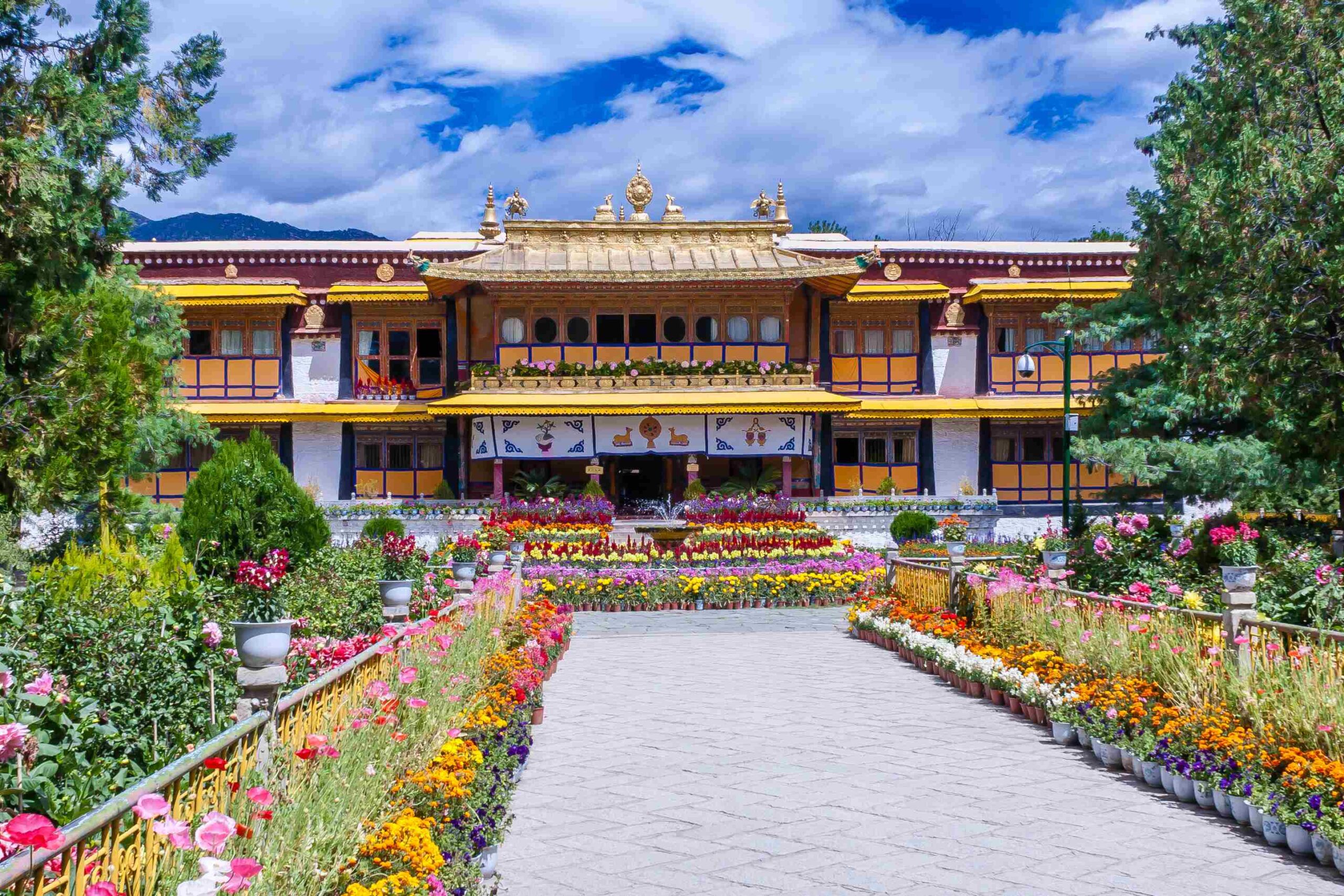
Norbulingka.
Frequently Asked Questions
-
What is Norbulingka and why should I visit?
Norbulingka, meaning “Park of Treasure” in Tibetan, is the summer palace of the Dalai Lamas located in Lhasa. It’s a serene garden and architectural marvel that offers a glimpse into Tibetan culture and history, perfect for those looking to explore the beauty of Tibet. -
How do I get to Norbulingka from Lhasa?
Norbulingka is conveniently located in downtown Lhasa. You can take public buses such as No. 2, 14, or 24, or enjoy a leisurely walk from nearby attractions like the Potala Palace. Taxis or pedicabs are also great options if you’re coming from further away. -
What are the opening hours and entrance fees?
Norbulingka is open daily, and the entrance fee is 60 RMB. If you’re interested in visiting the only zoo in Lhasa located within the park, be prepared to pay an additional 10 RMB. -
How much time should I allocate for my visit?
To fully enjoy the vastness of Norbulingka, plan to spend 2-3 hours exploring its gardens, palaces, and cultural exhibits. If you prefer a shorter visit, you can opt for a guided bus tour around the park for 20 RMB. -
What can I expect to see inside Norbulingka?
Inside Norbulingka, you will find several palaces, beautiful gardens, and historical relics, including stunning murals and Buddha statues. The main palaces—Kelsang Potrang, Tyokyil Potrang, and Takten Migyur Potrang—are must-sees for their unique architecture and cultural significance. -
Are there any special events or festivals at Norbulingka?
Yes! One of the most notable events is the annual Shoton Festival, which takes place in July according to the Tibetan lunar calendar. During this festival, you can enjoy traditional Tibetan opera, local food, and vibrant cultural performances in the park. -
Is Norbulingka suitable for families?
Absolutely! Norbulingka is a family-friendly destination with spacious gardens, a zoo, and various cultural activities. Kids will enjoy exploring the park, and families can participate in picnics and festivals held throughout the year. -
What should I wear and bring for my visit?
Given Norbulingka’s altitude of 3,650 meters, dress in layers to accommodate temperature changes. Comfortable walking shoes are a must, and don’t forget to bring a camera to capture the stunning scenery! Also, consider bringing water and a light snack, especially if you plan to spend several hours exploring.
Final Thoughts on Your Trip
As your journey at Norbulingka comes to a close, take a moment to reflect on the serene beauty and rich history that envelops this extraordinary palace and garden. Nestled against the backdrop of the majestic Potala Palace, Norbulingka offers a tranquil escape, inviting you to immerse yourself in the vibrant culture and spiritual heritage of Tibet.
Wandering through its lush gardens and intricate palaces, you have experienced a place where nature and artistry intertwine, where the echoes of the Dalai Lamas’ footsteps resonate within the walls of history. From the stunning murals to the captivating performances during the Shoton Festival, every corner reveals a story waiting to be discovered.
Whether you took leisurely strolls through its expansive landscapes or engaged with the local traditions, Norbulingka is a treasure trove of unforgettable moments. As you prepare to leave, let the peace and inspiration found here accompany you on your travels ahead. Each visit to Norbulingka is not just a step into a garden but a journey into the heart of Tibetan culture, a reminder of the beauty that lies in tranquility, and a call to cherish the stories that shape our world. Safe travels, and may your adventures continue to be filled with wonder and discovery!